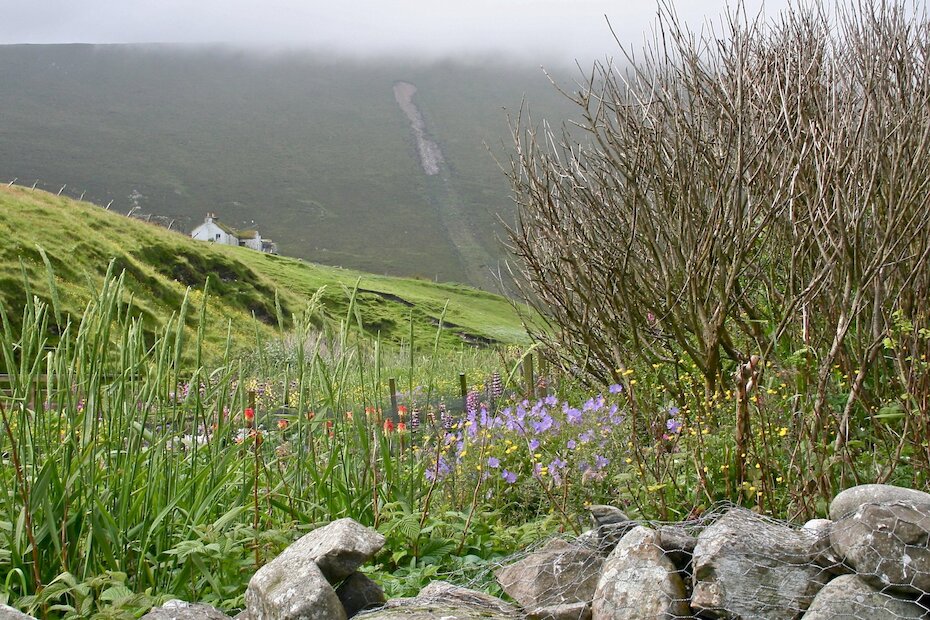A quick introduction
Like much of the rest of Shetland, there's evidence of settlement in Foula dating back to the Iron and Bronze Ages. Around 800 AD, Norsemen conquered Foula and took up residence in the fertile Hametoon, leaving us croft names like Norderhus, Krugali, and Guttren, and many other descriptive Norse placenames.
Due to its remote location, it is believed that Foula existed for many years almost as an independent entity in its own right. It was one of the last places in Shetland where the old Norn language, a relic of Norse times, was spoken.
After the Scots took over Shetland in the 15th century, Foula became part of a west Shetland estate.
Today, Foula is home to around 35 islanders, who share it with thousands of birds, hundreds of hardy and colourful Foula sheep, Shetland ponies and even its own sub-species of field mouse. It is an island rich with folklore and history and has a strong musical tradition.
How to get to Foula
You can get to Foula by ferry from the pier at Walls, in the West Mainland, which operates three times a week; the crossing takes 2 hours 15 minutes. Please note that this is not a car ferry and booking is essential. It is not possible to make a day trip to Foula by ferry, as the ferry is based on the island and, on the days when it operates, it makes only one return trip.
Alternatively, Shetland Sea Adventures runs day cruises to Foula from Hamnavoe in the island of Burra. The trip includes time onshore and a journey around Foula giving the opportunity to witness the impressive cliffs from sea level.
There are also regular flights by Airtask from Tingwall Airport, just outside Lerwick. It is possible to make a day trip using the plane, giving you a few hours to explore but better still is to book accommodation for 4-5 nights and really see what the island has to offer.
Both the air and the sea service are very dependent on the weather, so it's best to check with the operators before you set off for the pier or the airport.
Where to stay
Foula has self-catering accommodation available; see the Foula Heritage website for more information.


